Every company wants to attract and retain the best talent.
For decades, that meant offering perks and fringe benefits ranging from club memberships to company cars and a limitless expense account. The Great Recession, coupled with the rise of Millennials in the workforce, has shifted the top talent perks that companies offer.
Now, especially in the tech sector, companies are looking for ways to boost employees’ autonomy and work-life balance rather than their balance sheets.
How? By offering time for employees to work on side projects (innovating for the company), wellness incentives, assistance with household chores/errands, and flexible work schedules.
As business author Daniel Pink notes in his bestseller “Drive,” these perks are effective because when it comes to motivating people, “control leads to compliance; autonomy leads to engagement.” For firms small and large, these benefits are fast becoming the perks that attract top talent.
Side Project Time
Popularized by companies such as Google, offering employees side project time is one way to attract the best and the brightest. At Google, for example, employees operate on the 80/20 rule: For every 80 percent of their work week or month that they spend on assigned tasks and projects, they get 20 percent to spend on their own ideas to move the company forward.
The benefit—which costs the company little, and has actually resulted in the creation of revenue-generating applications such as Gmail—is an easy way for innovative companies to attract and retain top talent.
Wellness Incentives
Companies are getting serious about cultivating employees’ health and fitness goals – to the benefit of both the company and employees. It makes sense: Healthier employees are happier, more productive, and suffer from less health-related absenteeism.
But on top of offering on-site gyms or subsidized gym memberships, some companies are extending further benefits to those who are looking to achieve fitness goals, such as Clif Bar’s $350 stipend to help employees cover entry costs for races, fitness events and competitions. Others such as Asana and Sweetgreen provide healthful meals to employees daily. In addition, some are even granting employees “fitness breaks” – time to exercise on the clock.
Assistance with Household Chores/Errands
Conceirge services and assistance with household chores and errands are becoming a more popular perk among companies such as McGraw Wentworth, Akraya, and Johnson & Johnson. The services these companies offer their employees include on-site laundry pickup and dropoff services, returning library books, and in-home professional cleaners every two weeks.
Flexible Work Schedules
Another way to sell potential recruits on your firm: flexible works schedules. In a recent Harris Interactive survey, approximately 50 percent of employees say they would take a salary cut in order for a more flexible schedule. What’s more, three-quarters of American workers surveyed say flexibility is one of the top traits they look for in new jobs—a number that’s up 10 percent from last year.
Sixty-eight percent of companies now offer a mix of part-time schedules, flexible start-stop times, and telecommuting on an ad-hoc basis, according to World at Work. The majority of these firms are large organizations, meaning that many small- to mid-sized firms have ground to make up when it comes to offering employees increased flexibility.
Sure, Best Buy’s ROWE might have been ahead of its time. A no-holds-barred remote working policy might not be for your company. But that doesn’t mean your firm can’t stake out a nuanced middle ground that offers employees a modicum of autonomy and flexibility.
What other trends are you seeing in the world of work perks?
